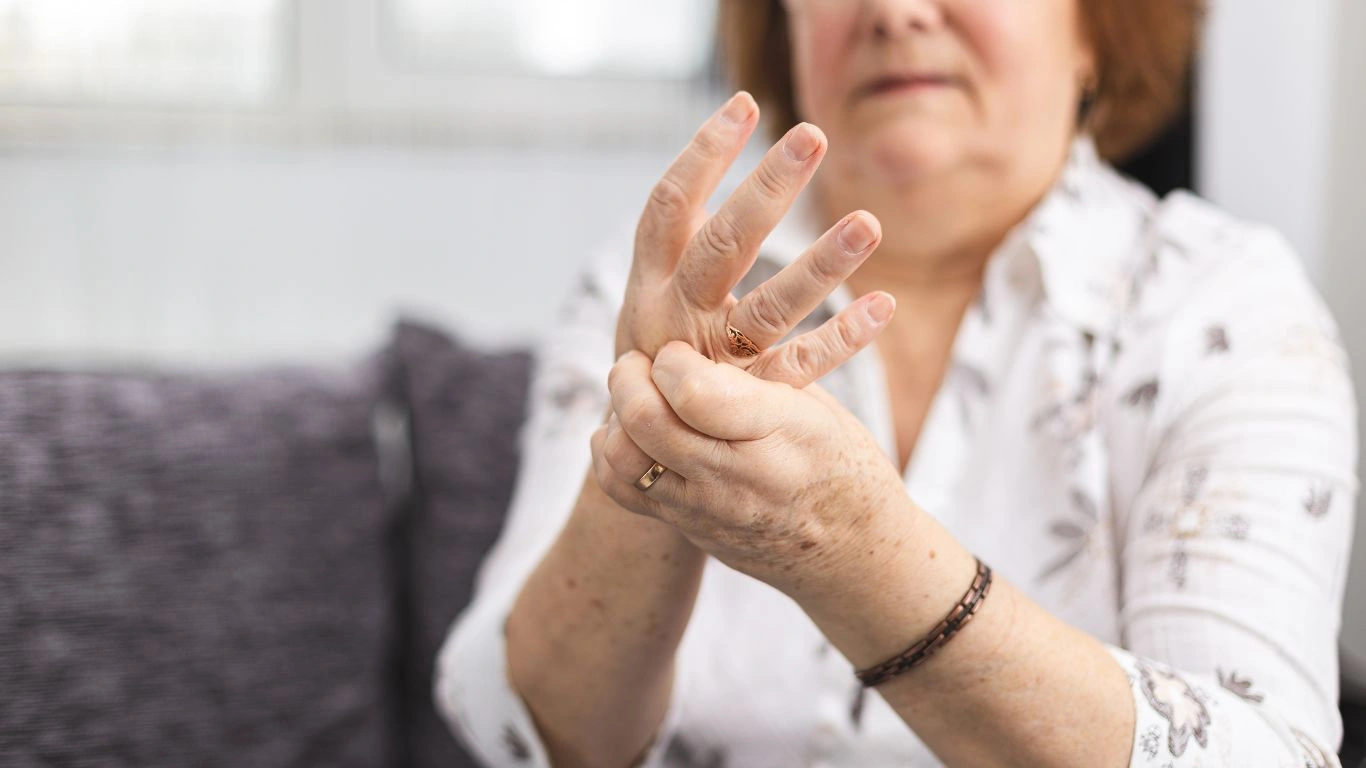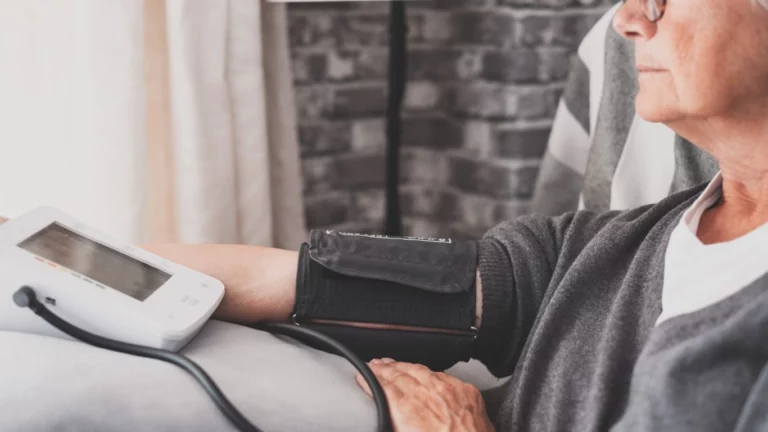Rheumatoid Arthritis and the Power of Body Alignment for Pain Relief
As a Rheumatology Nurse Practitioner, I’ve seen firsthand how rheumatoid arthritis (RA) can significantly impact not just the joints, but the overall quality of life of those living with the condition. One aspect that’s often overlooked in managing RA is the importance of body alignment. Many patients focus on medications and therapies but may not fully grasp how posture and body alignment play a crucial role in minimizing joint pain and preventing further damage. This article explores why maintaining proper body alignment is vital for individuals with rheumatoid arthritis, how it can improve daily function, and practical tips for incorporating alignment practices into your routine.
Understanding the Link Between Rheumatoid Arthritis and Body Alignment

Rheumatoid arthritis is a chronic autoimmune disorder that primarily affects the joints, causing inflammation, stiffness, and pain. Over time, the inflammation can lead to joint deformities and limited movement, which in turn impacts the way a person moves and holds their body. This is where body alignment comes into play.
Body alignment refers to the positioning of the body and its parts in relation to one another. Proper alignment ensures that the body’s weight is distributed evenly, reducing unnecessary strain on the joints and muscles. For someone with rheumatoid arthritis, this is particularly important because improper alignment can exacerbate existing pain, cause additional joint stress, and even contribute to the development of new joint deformities.
For instance, when you slouch or sit in a position that misaligns your spine, it may place undue pressure on your hips, knees, and even the wrists. For people with RA, this can make the symptoms worse, leading to further pain and discomfort. On the flip side, maintaining good body alignment can help prevent these negative effects and promote more fluid movement.
The Role of Posture in Joint Health
Posture is an essential component of body alignment, and it’s something that many of us take for granted. As a nurse practitioner, I often see patients who don’t realize how poor posture can affect their joints, especially when dealing with RA. Whether standing, sitting, or lying down, posture plays a significant role in managing joint stress.
When you maintain a good posture, it helps to distribute your body’s weight more evenly across the joints. In contrast, slumping or rounding your back can put added pressure on the spine and lower body, which can worsen the pain and discomfort that comes with RA. Over time, poor posture can even lead to misalignment of the joints, increasing the risk of deformities.
It’s common for those with RA to develop a habit of protecting painful joints by avoiding certain movements, but this can result in compensation patterns that negatively impact overall alignment. For example, favoring one side of the body or shifting weight to avoid using a painful joint can cause imbalance in other parts of the body, eventually leading to more widespread pain and dysfunction.
How Proper Body Alignment Can Reduce Joint Pain

Maintaining good body alignment is a powerful tool in reducing joint pain and improving overall function for people with rheumatoid arthritis. Proper alignment ensures that the body moves in a more natural, efficient way, which minimizes the stress placed on the joints.
One of the key benefits of proper body alignment is that it helps to maintain the natural curvature of the spine, preventing added pressure on the lower back, hips, and knees. For those with RA, this can significantly reduce pain and stiffness in these areas, allowing for better mobility and comfort during daily activities.
Additionally, body alignment can help improve muscle strength and endurance. When your muscles are properly aligned, they are able to work more effectively, providing better support for the joints. This reduces the strain on the joints, which is especially important for those dealing with the chronic pain of rheumatoid arthritis.
Incorporating body alignment techniques, such as strengthening core muscles, using ergonomic supports, and making mindful adjustments during everyday tasks, can lead to long-term relief and enhanced joint function.
How to Incorporate Body Alignment into Your Daily Routine
It’s one thing to understand the importance of body alignment, but it’s another to actually put it into practice. As a Rheumatology Nurse Practitioner, I’ve found that my patients who take the time to make small adjustments in their daily lives experience noticeable improvements in their joint health. Here are a few simple but effective ways to incorporate body alignment into your routine:
- Mindful Posture Checks: Periodically check your posture throughout the day. Whether you’re sitting at a desk, standing, or walking, be mindful of how your body is aligned. Try to keep your spine straight and shoulders back. Small adjustments like these can make a big difference in reducing strain on your joints.
- Ergonomic Workspaces: If you spend long hours at a desk, invest in ergonomic furniture and tools. A chair with proper lumbar support, a monitor at eye level, and a keyboard that keeps your wrists straight can help keep your body aligned while you work.
- Strengthening Exercises: Regularly incorporating exercises that strengthen your core and support the spine can help maintain proper alignment. Pilates, yoga, and other low-impact exercises are particularly beneficial for people with rheumatoid arthritis.
- Stretching and Flexibility: Stretching exercises can improve flexibility and reduce stiffness in the joints. Consider incorporating gentle stretches into your daily routine, especially in the morning and after periods of inactivity.
Implementing these strategies will not only help in reducing pain and inflammation, but they will also support your overall well-being and help you manage the challenges that come with rheumatoid arthritis. Stay tuned for more tips on managing rheumatoid arthritis in upcoming sections!
Further Exploration of Body Alignment Techniques

In the next section, we will dive deeper into specific body alignment techniques, including posture exercises and ergonomic tools that can provide additional relief. Whether you’re dealing with early-stage RA or have been living with the condition for years, these strategies can make a real difference in improving your quality of life.
Effective Body Alignment Techniques for Rheumatoid Arthritis

Continuing from where we left off, let’s dive deeper into the practical ways you can improve your body alignment to better manage rheumatoid arthritis (RA). As a Rheumatology Nurse Practitioner, I’ve seen how integrating simple body alignment techniques can make a world of difference for people with RA, especially when it comes to preventing joint deformities, reducing pain, and improving overall mobility. These adjustments don’t have to be complicated, and many can be done at home with minimal equipment.
Strengthening Your Core for Better Posture
One of the most effective ways to improve your body alignment is by strengthening your core muscles. The core includes not only your abdominal muscles but also your lower back and pelvic muscles. A strong core helps support your spine and pelvis, reducing the strain on your joints and improving your posture.
For individuals with rheumatoid arthritis, strengthening the core can also help protect the hips, knees, and spine from undue pressure. When I recommend core strengthening exercises to my patients, I often suggest low-impact options like Pilates, yoga, or even simple floor exercises that don’t strain the joints.
Some effective core exercises include:
- Bridge Pose: Lie on your back with your knees bent, feet flat on the floor. Slowly lift your hips off the floor, engaging your core and glutes. Hold for a few seconds, then lower back down.
- Planks: Start by holding a plank position on your knees or toes, making sure your body forms a straight line from head to heels. Engage your core and hold for as long as you feel comfortable.
- Bird Dog: On all fours, extend your opposite arm and leg while keeping your spine neutral. Hold for a few seconds and return to the starting position.
These exercises are great for improving body alignment and ensuring that your spine and joints stay supported. If you’re new to these exercises, start slow and focus on quality rather than quantity. Consistency is key!
Ergonomics: Creating an RA-Friendly Environment

Another key aspect of maintaining body alignment is ensuring that your environment supports your posture. This is where ergonomics come into play. Whether you’re working at a desk, cooking in the kitchen, or sleeping, your environment should be set up to promote natural, pain-free movements that reduce the stress on your joints.
In my experience, I’ve found that many people with RA don’t realize how much of a difference ergonomic changes can make. The right chair, desk, or pillow can go a long way in reducing the strain on your joints and helping you maintain better body alignment throughout the day.
Desk and Workstation Adjustments
For those of us who work at a desk, whether at home or in the office, creating an ergonomic workstation is vital. Here’s how you can make small changes to your setup:
- Chair: Choose a chair that supports the natural curve of your spine. The backrest should support your lower back (lumbar region) and encourage you to sit upright.
- Monitor: The top of your monitor should be at eye level to avoid straining your neck. Your screen should also be about an arm’s length away from your face.
- Keyboard and Mouse: Keep your keyboard and mouse at elbow height, and ensure that your wrists remain neutral (not bent up or down) while typing or using the mouse.
These small adjustments can make a significant difference in maintaining proper body alignment while working and can help alleviate neck, back, and wrist pain associated with RA.
Sleeping Position: Supporting Your Joints While You Rest
One often overlooked aspect of body alignment is how you sleep. RA can cause discomfort in various joints, and improper sleep positions can worsen these symptoms. Let me tell you from experience—sleeping with proper support can significantly affect your morning stiffness and overall joint health.
To improve your body alignment while you sleep:
- Sleep on a Supportive Mattress: A mattress that’s too soft can cause your spine to sink, leading to misalignment. Look for a medium-firm mattress that keeps your body supported.
- Use Pillows for Joint Support: If you experience pain in your knees or hips, placing a pillow between your knees can help align your spine. Similarly, a pillow under your arms or neck can provide extra support if you’re dealing with shoulder or neck pain.
- Try a Side Sleeping Position: Side sleeping is generally better for people with RA, as it helps keep the spine neutral. Just make sure your body is aligned, with your head, shoulders, and hips in a straight line.
Getting a good night’s sleep with proper body alignment can help you wake up feeling less stiff and more ready to tackle the day.
Daily Movements and Body Awareness

Incorporating body alignment into your daily movements is just as important as strengthening exercises and ergonomic adjustments. It’s about building awareness of your body’s position throughout the day—whether you’re walking, lifting, or simply sitting.
As someone who spends a lot of time working with people with RA, I always emphasize the importance of listening to your body and making small changes to reduce strain. Here are a few things to keep in mind:
- Standing: When standing for long periods, try to shift your weight from one foot to the other occasionally. Avoid locking your knees and engage your core to reduce strain on your lower back.
- Lifting: Always bend your knees (not your back) when lifting objects. Use your legs to do the work and keep the object close to your body to avoid unnecessary strain.
- Walking: Maintain an upright posture while walking, and take small, comfortable steps. Avoid walking with your head forward or hunched over, which can lead to neck and back pain.
By incorporating these simple movements into your daily routine, you’ll start to see the benefits of improved body alignment and a reduction in joint pain and discomfort.
Maintaining Long-Term Body Alignment for RA Management

As we continue exploring how body alignment plays a pivotal role in managing rheumatoid arthritis (RA), let’s look at how these practices can be sustained in the long term. While making adjustments in the short term can offer immediate relief, it’s important to incorporate these habits into your everyday routine for ongoing joint health. After all, RA is a chronic condition, and maintaining proper alignment over time can help prevent further damage and reduce flare-ups.
From my experience as a Rheumatology Nurse Practitioner, I’ve noticed that those who take a proactive approach to body alignment—whether by improving posture, strengthening muscles, or modifying their environment—often report better outcomes in the long run. The key to maintaining these changes is consistency. Making small, mindful adjustments each day can become second nature over time, and you’ll likely notice less pain, stiffness, and discomfort as a result.
Mindful Movement: Staying Aware of Your Body Every Day
One of the most effective ways to ensure long-term body alignment is by integrating mindful movement into your daily routine. By being conscious of your posture and body alignment during everyday activities, you can gradually make changes that become second nature. This doesn’t mean overthinking every movement, but rather developing an awareness of your body’s position and its impact on your joints.
For instance, when you’re standing, are you placing equal weight on both legs? Are you slumping over while sitting, or are you maintaining a neutral spine? As I often tell my patients, small tweaks in your body mechanics throughout the day can have a cumulative effect on your joint health.
Here are some practical ways to incorporate mindful movement into your routine:
- Practice the “Neutral Spine” Concept: Whether you’re standing or sitting, keep your spine in a neutral position—think of it as a straight line from the top of your head to your tailbone. This helps prevent the added stress on your spine and joints.
- Pay Attention to Your Breathing: Often, when we are in pain or discomfort, we tense up. Practicing deep breathing helps reduce muscle tension and improves overall body alignment.
- Mind Your Gait: When walking, make sure you are stepping evenly with each leg, keeping your feet flat on the ground. This helps maintain balance and ensures your spine remains properly aligned.
Maintaining Flexibility and Range of Motion
While strengthening exercises are important, so is maintaining flexibility, especially for individuals with rheumatoid arthritis. In my practice, I often emphasize the significance of stretching and joint mobility exercises as part of a balanced routine. These exercises can help increase your range of motion, reduce joint stiffness, and improve posture.
Incorporating gentle stretching into your day doesn’t require a lot of time, but it can make a huge difference in keeping your joints moving freely. Here are some ways you can work on flexibility:
- Gentle Yoga or Tai Chi: Both of these low-impact activities focus on slow, deliberate movements and breathing, which promote flexibility, joint stability, and stress relief. They are also excellent for promoting proper body alignment.
- Targeted Joint Stretches: Focus on areas where you feel stiffness or tightness, such as the neck, shoulders, hips, and wrists. Stretching these areas regularly can help reduce pain and improve your posture.
- Range-of-Motion Exercises: These exercises involve moving your joints through their full range of motion. They can be as simple as gently bending and straightening your arms or legs, which will help maintain your flexibility and prevent joint contractures (stiffness that limits movement).
Remember, it’s important to consult with a healthcare provider before starting any new stretching or exercise regimen, particularly if you’re managing a condition like RA.
Nutrition and Its Role in Supporting Joint Health and Alignment

We can’t talk about body alignment and RA management without mentioning nutrition. While proper body mechanics are key to supporting joint health, so is fueling your body with the right nutrients. A balanced, anti-inflammatory diet can help reduce joint pain and stiffness, complementing the positive effects of body alignment.
As a nurse practitioner, I’ve seen how nutrition impacts my patients’ symptoms. Incorporating foods that fight inflammation, like omega-3-rich fish, nuts, and leafy greens, can go a long way in supporting your joints. Additionally, staying hydrated helps maintain joint lubrication, which is vital for proper mobility and alignment.
Some foods that may help reduce inflammation and support joint health include:
- Omega-3 Fatty Acids: Found in fatty fish such as salmon, sardines, and mackerel, omega-3s can help reduce inflammation in the body.
- Antioxidant-Rich Foods: Berries, spinach, kale, and other colorful vegetables are packed with antioxidants that can help reduce oxidative stress and inflammation.
- Turmeric and Ginger: Both of these spices have natural anti-inflammatory properties and can be added to meals or consumed as teas.
Maintaining a healthy diet isn’t just about what you eat; it’s also about what you avoid. Minimizing processed foods, refined sugars, and excessive alcohol intake can help prevent inflammation from worsening, allowing your body to function at its best.
When to Seek Professional Help
While improving body alignment and incorporating these practices into your daily routine can have a significant positive impact on your RA symptoms, there may be times when you need additional help. If you’re struggling with severe joint pain, difficulty maintaining alignment, or a flare-up that doesn’t improve, it’s important to consult with your healthcare provider.
As someone who has spent years working with RA patients, I always encourage open communication with your healthcare team. Whether it’s physical therapy, medication adjustments, or more personalized treatments, your team can guide you toward the best plan for managing RA and improving your body alignment.
Remember, RA is a journey, and it’s all about finding the right balance between managing symptoms, improving body alignment, and maintaining a healthy, active lifestyle. You don’t have to do it alone—your healthcare provider, physical therapist, and support network are here to help you every step of the way.
References and Disclaimer
References: For further reading and more in-depth information on rheumatoid arthritis and body alignment, consider checking reputable sources such as The American College of Rheumatology and Mayo Clinic.
Disclaimer: The information in this article is based on personal experience and general knowledge. It is not intended as medical advice. Always consult with a healthcare professional before making any significant changes to your diet, exercise routine, or treatment plan for rheumatoid arthritis.

Tarra Nugroho is a dedicated Nurse Practitioner with a strong foundation in family and preventive care. She brings both compassion and clinical expertise to her practice, focusing on patient-centered care and health education. As a contributor to Healthusias.com, Tarra translates medical knowledge into clear, empowering articles on topics like women’s health, chronic disease management, and lifestyle medicine. Her mission is simple: help people feel seen, heard, and informed—both in the clinic and through the content she creates. When she’s not caring for patients, Tarra enjoys weekend hikes, plant-based cooking, and curling up with a good health podcast.






